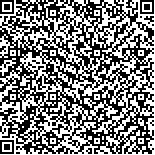| 摘要: |
| 海洋生物体内蕴含着丰富的天然活性物质,许多都具有抑菌活性,据此研制新型海洋生物源抑菌药物,是海洋生物产业中的一个新领域,也是新型抑菌药物研发的重要途径。壳聚糖是来自海洋中虾蟹等甲壳类动物外壳的甲壳素的脱乙酰产物,壳寡糖是壳聚糖的降解产物,具有比壳聚糖更好的水溶性和生物活性,在食品和生物医药等领域具有更广阔的应用前景。为了提高壳寡糖的抑菌活性,本研究以壳寡糖和烟酸为原料、N,N-羰基二咪唑为催化剂合成了壳寡糖烟酸接枝衍生物,并与不同链长的溴代烷烃亲核反应得到其阳离子化衍生物。壳寡糖及其衍生物的化学结构通过红外光谱(FTIR)和核磁共振波谱(NMR)进行分析表征,壳寡糖及其衍生物对2种海洋致病细菌和3种植物致病真菌的体外抑菌能力分别采用肉汤稀释法和菌丝生长速率法进行研究和评估。结果表明,与壳寡糖相比,合成的终产物对致病菌的抑制能力得到了极大增强,其中含有己基的烟酰化壳寡糖季铵盐表现出最强的抑制海洋致病细菌活性(MIC=0.125 mg/mL、MBC=0.25 mg/mL),并且该化合物表现出较强的抗真菌活性,在1.0 mg/mL时,对灰葡萄孢菌和围小丛壳的抑制率分别为65.7%和51.5%。这些结果表明,含直链烷烃的烟酰化壳寡糖季铵盐具有较强的抑菌活性,在食品、生物医药等行业具有较大的应用潜力。 |
| 关键词: 壳寡糖 烟酰化反应 阳离子化 直链烷基 抑菌活性 |
| DOI:10.11759/hykx20220721001 |
| 分类号: |
| 基金项目:中国科学院青年创新促进会(2020219);国家重点研发计划(2019YFD0900705) |
|
| Niacinated chitooligosaccharide quaternary ammonium salt:synthesis and antimicrobial activity |
|
LIN Conghao1, YUAN Yuting2, TAN Wenqiang2, GUO Zhanyong2, JIANG Aili1
|
|
1.College of Life Sciences, Yantai University, Yantai 264005, China;2.Yantai Institute of Coastal Zone Research, Chinese Academy of Sciences, Yantai 264003, China
|
| Abstract: |
| Natural bioactive compounds present in marine organisms can exert antimicrobial functions. Hence, the development of marine organism-derived antimicrobials has become a novel area of interest among marine biology industries and holds innovative potential for new antimicrobial development. Chitosan is the deacetylated product of chitin, a renewable resource in the ocean. Chitooligosaccharide is the degraded product of chitosan with better water solubility and biological activity, displaying broader application prospects in the food and biomedicine fields. To enhance the antimicrobial activity of chitooligosaccharide, a chitooligosaccharide-niacin acid derivative was synthesized using N, N'-carbonyldiimidazole as a catalyst, and its cationic derivatives were obtained through a further nucleophilic reaction between the chitooligosaccharide-niacin acid derivative and bromoalkanes. The structure of chitooligosaccharide and its derivatives was analyzed using Fourier-transform infrared spectroscopy and nuclear magnetic resonance, and its antimicrobial efficacy against two harmful bacteria was assessed using broth dilution methods and three plant-threatening fungi by hyphal measurement. The results indicated that the end products had enhanced antimicrobial activity compared with chitooligosaccharide. In particular, the chitooligosaccharide derivative containing n-hexane displayed great antimicrobial effects against marine pathogens (MIC=0.125 mg/mL; MBC=0.25 mg/mL) and plant-threatening fungi (65.7% against Botrytis cinerea and 51.5% against Glomerella cingulate at 1.0 mg/mL). These results indicated that the preparation of niacinate chitooligosaccharide quaternary ammonium salt by introducing linear alkyls into chitooligosaccharides can significantly enhance antimicrobial activity. Such chitooligosaccharides will possess great application potential in food, biomedicine, and other industries. |
| Key words: chitooligosaccharide nicotinylation cationization linear alkyl antimicrobial activity |
